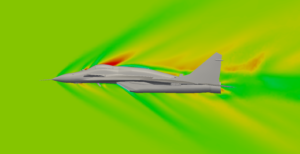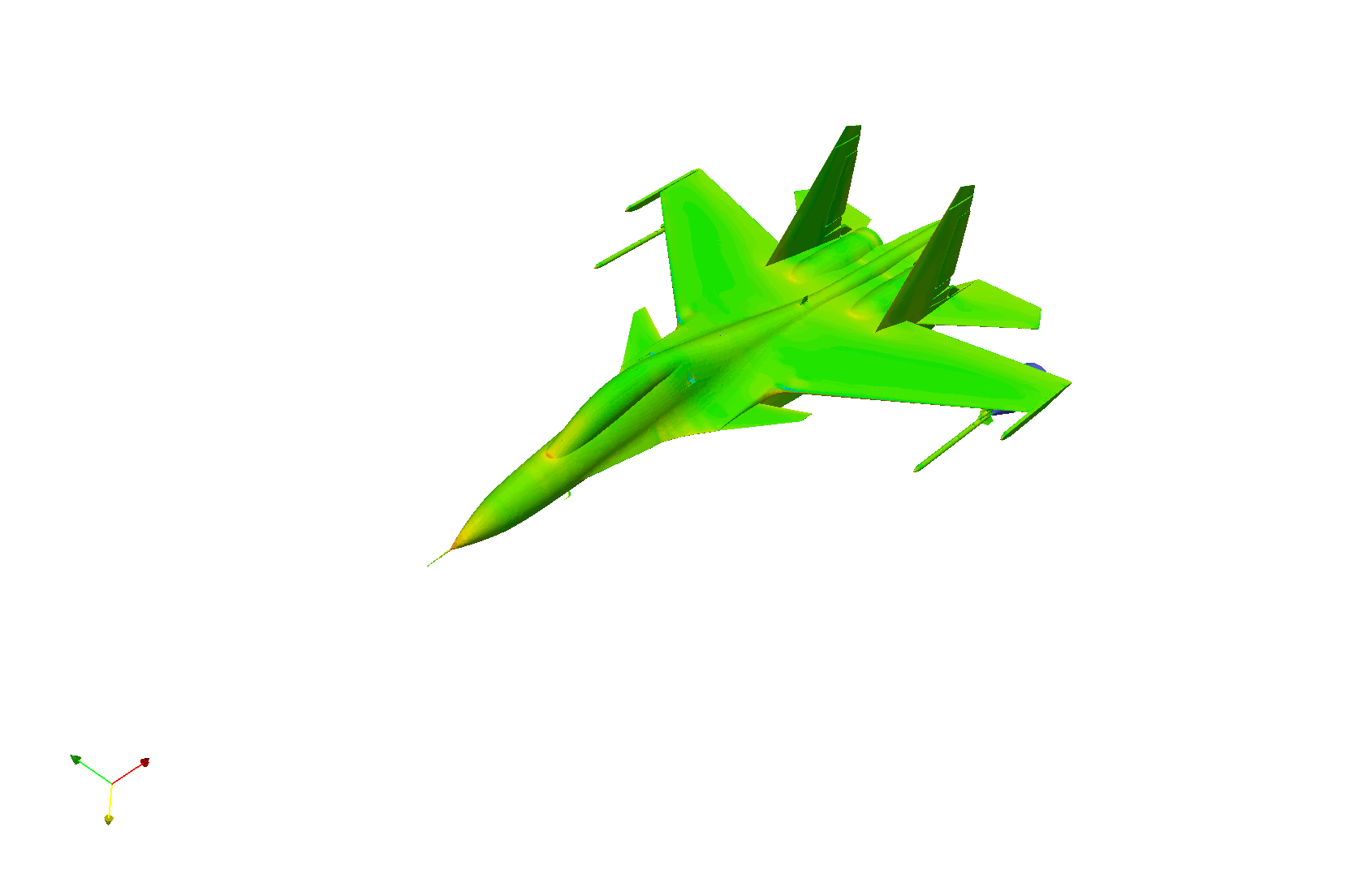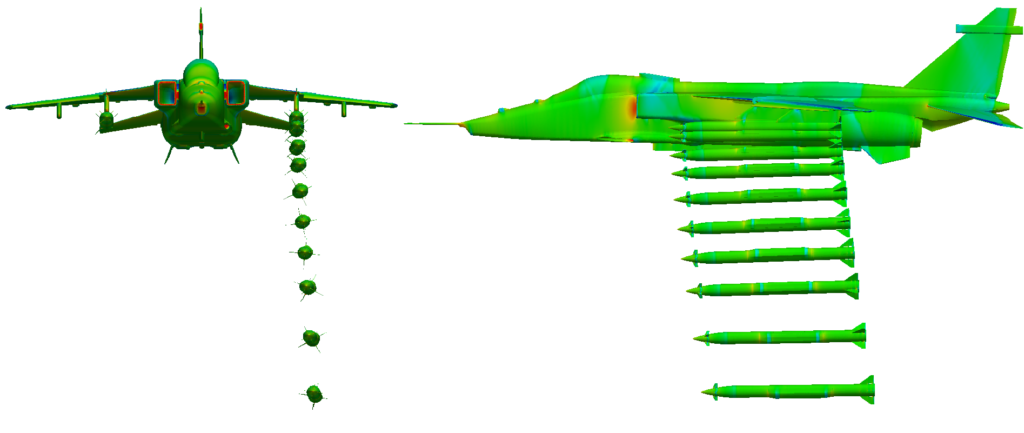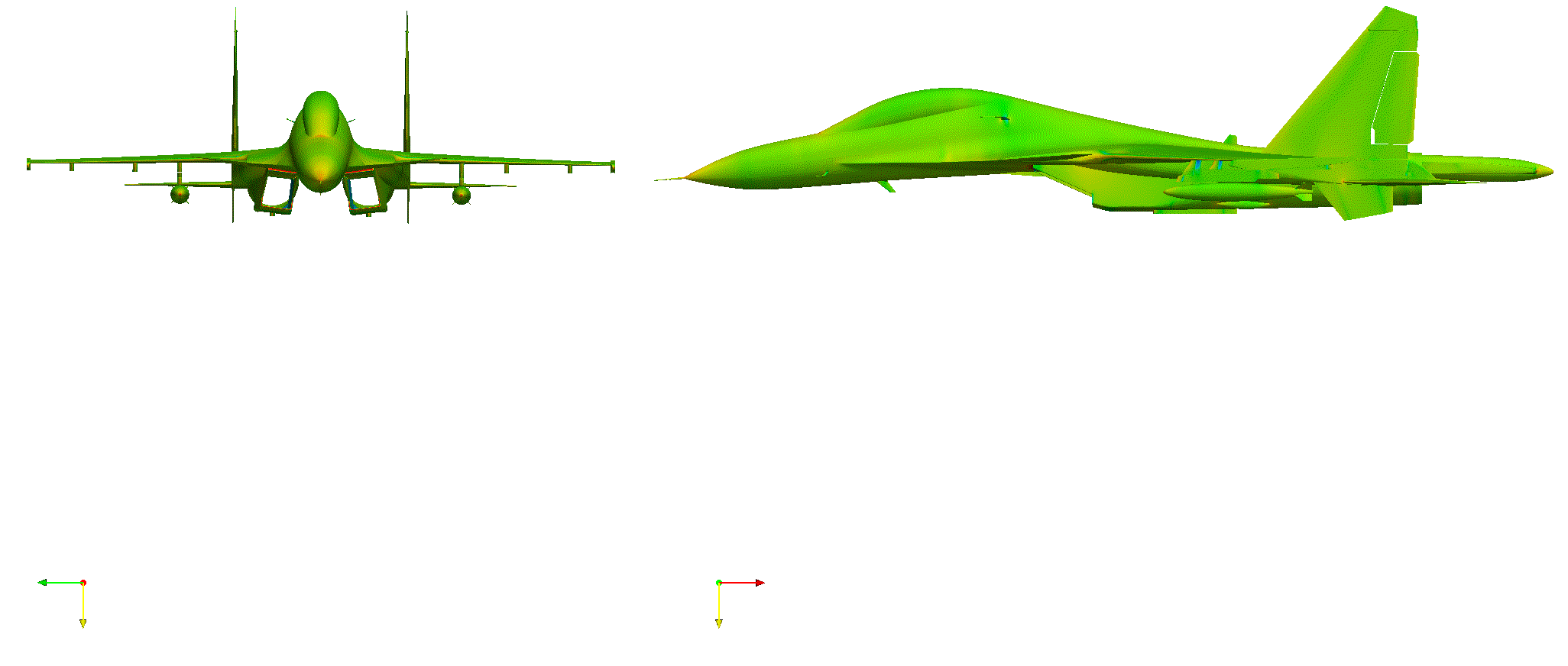Computational Fluid Dynamics also referred as CFD uses numerical methods and algorithms to analyze and solve problems related to fluid flows. CFD simulations involve breaking down complex fluid flow phenomena into smaller components, such as fluid particle movements, velocity, pressure, and temperature, and using mathematical equations and computational methods to model the behavior of the fluid flow.
CFD is a powerful tool that is used to study the behavior of fluids, including the airflows  around complex structures such as aircraft, missiles, or spacecraft. By using CFD, engineers analyze the aerodynamics of an aircraft, or components which need to be integrated on an existing platform and optimize design of new components for safety, maximum efficiency and aircraft performance with additional components which need to be integrated.
around complex structures such as aircraft, missiles, or spacecraft. By using CFD, engineers analyze the aerodynamics of an aircraft, or components which need to be integrated on an existing platform and optimize design of new components for safety, maximum efficiency and aircraft performance with additional components which need to be integrated.
Blue Hat Solutions has in-house server to run Hi-Fun CFD code (developed by SANDI, incuabtion of IISc Bangalore) for analyzing aeromechanical integration for the following activities:
Aerodynamic analysis: CFD is used to analyze the airflow around an aircraft and predict how the airflow will interact with various components such as the wings, engines, and control surfaces. This information is used to optimize the design of components whirch are being integrated on a fighter, helicopiter or cargo aircraft.
Structural analysis: CFD is used to study the effects of airflow on the structural components of an aircraft. By analyzing the stresses and strains in the structure caused by the airflow, our engineers design more durable and efficient structures.
Design optimization: By using CFD simulations, engineers test and evaluate different design concepts before they are built. This helps to identify potential design flaws and optimize the design to improve performance and reduce costs.
Overall, CFD services offered by Blue Hat Solutions is a powerful tool for understanding and optimizing the complex interactions between fluids and structures, and it is a key tool in the design and development of aircraft and other aeromechanical systems.
Computational Fluid Dynamics Simulations

Separation Analysis using CFD for Air to Air Store

Computational Fluid Dynamics (CFD) offers several advantages for the separation analysis of air-to-air stores:
- Cost-effective
- Time-efficient
- Detailed Insight
- Design Optimization
- Sensitivity Analysis
- Safety and Reliability
- Integration with System-level Simulations
It is important to note that while CFD offers significant advantages, validation against experimental data is crucial to ensure accuracy and reliability. CFD simulations should be supported by physical testing and real-world observations to verify the results and validate the design.
Separation Analysis using CFD for Air to Ground Store
Computational Fluid Dynamics (CFD) analysis for air-to-ground stores offers several key advantages:
- Aerodynamic Performance Evaluation
- Store-Platform Interaction
- Store Separation Analysis
- Weapon Delivery Accuracy
- Parametric Studies and Design Optimization
- Cost and Time Efficiency
- Visualization and Flow Analysis
- Risk Mitigation
It’s important to note that CFD analysis should be supported by experimental data and validation whenever possible to ensure accurate results and reliable design decisions.

Separation Analysis -Air to Ground Store with trajectory prediction
 Blue Hat Solutions provides a comprehensive CFD engineering package for integration of smart and dumb stores on fighter, helicopter and other aircrafts. CFD tools use the data models that BHSPL predictions have consistently matched with actual store release recordings.
Blue Hat Solutions provides a comprehensive CFD engineering package for integration of smart and dumb stores on fighter, helicopter and other aircrafts. CFD tools use the data models that BHSPL predictions have consistently matched with actual store release recordings.
